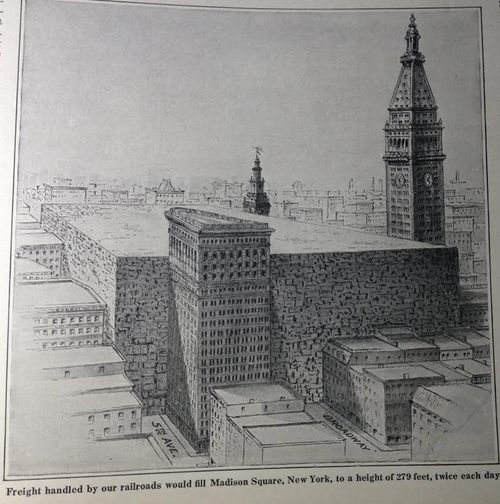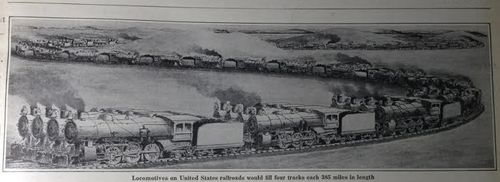JF Ptak Science Books Post 2251 Artistic Display of Information series
There are many posts on this blog relating to pre-WWII visualizations of bigness and smallness, of what it would like exactly to see 54,000 B-17s in flight, or how much a German prisoner eats per year in British compounds in 1917, and so on. I found the following qualitative display of quantitative data regarding American railroads and the astonishing amount of material they transported per year, resting comfortably in the pages of a Scientific American for 1918. The editor placed the display right on the first page of the issue, stating that "every one of us knows that the railway system of the United States has the quality of bigness, but not every one understands just how immense it actually is", and he was correct. The top image relates to the 2 billion tons of freight hauled by the railways every year--that would mean that you could fill up Madison Square Garden (one of the earliest versions of the building now occupying that spot) twice every day with stuff for one whole year. That would be a cube 870' long and 540' wide and 280' deep. (The editor doesn't reckon it but that would also make for a tower 870'x540'x90,000' (or 18 miles) high.)
The editor also points out that if you took all of the locomotives (and coal cars) in the U.S. and lined them up they'd be a 4-track-wide string of them 385 miles long--that's a lot of locomotives.
[Source, Scientific American, January 12, 1918, volume 118, page 49. ]





Comments